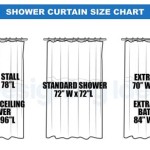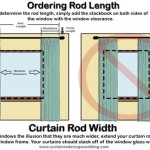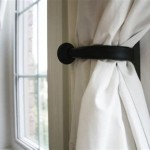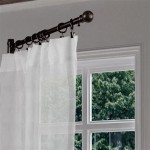The Best Way to Hang a Curtain Rod: A Comprehensive Guide
Hanging a curtain rod may seem like a simple task, but getting it right can significantly impact the overall look and functionality of your windows. Whether you're dealing with heavy drapes, delicate sheers, or anything in between, a properly installed curtain rod ensures a smooth, effortless operation and a polished, professional finish. This guide will provide a step-by-step breakdown of the best methods for hanging a curtain rod, addressing various considerations and ensuring you achieve the desired aesthetic and functionality.
Understanding the Basics of Curtain Rod Installation
Before diving into the specifics, it's essential to grasp the fundamental elements involved in hanging a curtain rod. These include:
- The type of curtain rod: This refers to the material, style, and design, which can range from simple tension rods to elaborate decorative ones.
- The type of wall: The material of your walls, whether drywall, plaster, brick, or concrete, will influence the type of hardware and installation method required.
- The weight of the curtains: Heavier curtains will demand more robust hardware and installation methods to ensure sufficient support.
- The desired height and placement: Deciding where to hang the curtain rod, taking into account factors like window trim and desired window coverage, is crucial for achieving the desired aesthetic.
Choosing the Right Hardware and Installation Method
Selecting the appropriate hardware and installation method is crucial for a secure and aesthetically pleasing curtain rod installation. Here's a breakdown of common options:
Brackets
Brackets are the most common method for supporting curtain rods. They come in various styles and finishes to match the rod and your décor. Brackets offer several advantages, including:
- Versatility: They can be used with different rod types and materials.
- Stability: They provide strong support, even for heavy curtains.
- Adjustability: Some brackets allow for customization of height and placement.
When choosing brackets, consider the weight of your curtains and select ones that can adequately support them. Additionally, opt for brackets that complement the style of your curtain rod and the overall décor of the room.
Screws and Anchors
Screws and anchors are used to securely attach brackets to walls. The appropriate type of screw and anchor depends on the wall material:
- Drywall: Use drywall screws with plastic anchors for reliable support.
- Plaster: Utilize drywall screws and anchors or specialized plaster screws for strong attachment.
- Brick and concrete: Opt for masonry screws or drill pilot holes and use concrete anchors for secure installation.
Always ensure that the screws and anchors are appropriately sized for the weight of the curtain rod and curtains.
Tension Rods
Tension rods offer a convenient and quick solution for hanging lightweight curtains, especially in situations where drilling into walls is not feasible. These rods work by creating tension between two points, often the window frame or the wall, and require no hardware for installation. However, tension rods are not suitable for heavy curtains as they may not provide adequate support.
Other Installation Options
For unique situations, additional installation options exist, including:
- Adhesive hooks: Suitable for lightweight curtains and temporary installations, these adhesive hooks can be readily removed without damaging the wall.
- Ceiling-mounted rods: These rods are installed directly on the ceiling, offering a unique and minimalist look, especially for large windows or sliding doors.
Step-by-Step Guide to Hanging a Curtain Rod
Now that you understand the basics, let's delve into the step-by-step process of hanging a curtain rod, emphasizing the importance of accuracy and attention to detail:
- Measure and mark the desired position: Using a tape measure, determine the optimal height and width for the curtain rod. Consider factors like window trim, desired coverage, and the overall aesthetic. Mark the positions of the brackets with a pencil.
- Install the brackets: If using screws and anchors, pre-drill pilot holes to prevent cracking. Insert the anchors, if required, and then drive in the screws securely. Adjust the brackets to ensure a level installation. For tension rods, simply extend the rod until it creates sufficient tension, placing it in the desired position.
- Insert the curtain rod: Once the brackets are securely in place, slide the curtain rod into the brackets. Double-check that the rod is level, securely attached, and ready for curtains.
- Hang the curtains: Carefully hang your curtains on the rod, ensuring they are evenly distributed and centered. Adjust the length and fullness as desired, and make any necessary adjustments to the rod position if needed.
By following these steps diligently, you'll ensure a smooth and successful curtain rod installation, enhancing the overall appeal of your room and providing a functional and elegant window treatment.

How To Install Curtain Rods Best Practices The Shade

How To Install Curtain Rods Best Practices The Shade

How To Install Curtain Rods 5 Simple Steps
How To Hang Curtains In 7 Steps

How To Install Curtain Rods Best Practices The Shade

How To Install Curtain Rods And Hang Curtains

A Guide To Curtain Measuring And Installation Tms Menagerie

Signaturethings 2 Easy Step To Hang Curtain Rod On Drywall Like A Pro

How To Install Curtain Rods 5 Simple Steps

How To Hang Curtains Like A Pro








